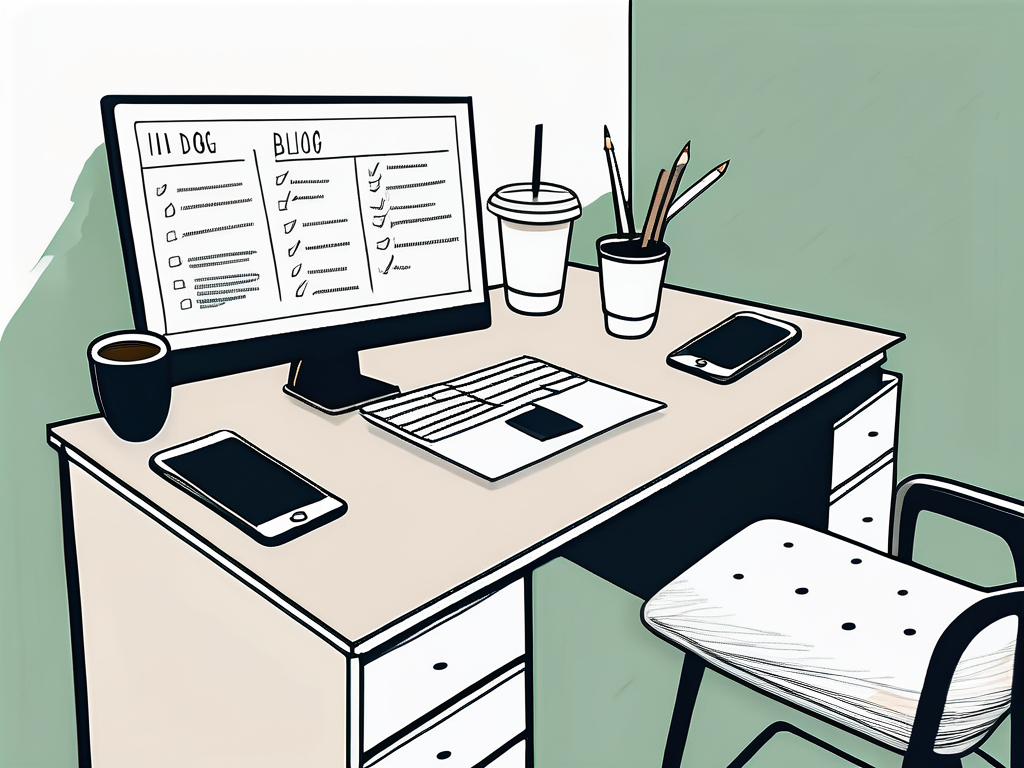In today's modern world, many of us spend long hours behind a desk, working sedentary jobs. While this may be necessary for our careers, it can take a toll on our physical and mental well-being. The aches and pains that come from sitting for extended periods of time can be debilitating and affect our quality of life. Fortunately, there is a solution that can help alleviate these issues - yoga.
Understanding the Impact of Sedentary Work
Before we delve into how yoga can help, let's take a look at the impact of sedentary work on our bodies. Sitting for prolonged periods can lead to a host of physical and mental health issues. The lack of movement can result in poor posture, tight muscles, and weakened joints. Additionally, it can take a toll on our mental health, leading to increased stress levels and reduced focus.
It's important to recognize that the effects of sedentary work extend beyond just physical discomfort. The sedentary lifestyle associated with desk jobs can also have long-term implications on our overall well-being. From cardiovascular issues to decreased life expectancy, the consequences of prolonged sitting are significant and far-reaching.
The Physical Consequences of Desk Jobs
Sedentary work often leads to various physical ailments. These can include neck and shoulder pain, lower back pain, and even issues with digestion. When we sit for long periods, our muscles become tight and weak, leading to imbalances throughout the body.
Furthermore, the impact of desk jobs on our bodies goes beyond just muscle pain. Prolonged sitting can also affect our metabolism, leading to weight gain and an increased risk of chronic conditions such as diabetes and heart disease. These physical consequences highlight the importance of incorporating movement and activity into our daily routines to counteract the negative effects of sedentary work.
Mental Health and Sedentary Work
In addition to the physical impact, sedentary work can also negatively affect our mental health. The lack of movement and exposure to natural light can contribute to feelings of anxiety and depression. It can also leave us feeling stagnant, reducing our overall motivation and productivity.
Moreover, the sedentary nature of desk jobs can impact our cognitive function and emotional well-being. Studies have shown a correlation between prolonged sitting and cognitive decline, as well as increased feelings of isolation and loneliness. Addressing the mental health implications of sedentary work is crucial for maintaining a healthy work-life balance and overall sense of well-being.
The Science Behind Yoga
Yoga has been practiced for thousands of years and has numerous proven benefits for both physical and mental well-being. The practice combines physical movement, breathwork, and mindfulness to promote overall health and balance.

One fascinating aspect of yoga is its impact on the nervous system. Through specific breathing techniques and poses, yoga can activate the parasympathetic nervous system, also known as the "rest and digest" system. This activation helps to reduce the body's stress response, leading to lower levels of cortisol, the stress hormone. By calming the nervous system, yoga can contribute to better sleep, improved digestion, and a stronger immune system.
Yoga and Physical Health
Regular yoga practice can help counteract the physical ailments that often come with sedentary work. The various poses and stretches in yoga help to improve flexibility, strengthen muscles, and correct imbalances in the body. This can alleviate the tension and pain that result from hours of sitting.
Furthermore, yoga has been found to have a positive impact on cardiovascular health. Certain styles of yoga, such as Vinyasa or Power Yoga, involve dynamic sequences that elevate the heart rate and improve circulation. Over time, this can lead to a stronger heart, lower blood pressure, and better overall cardiovascular function.
Yoga for Mental Well-being
In addition to the physical benefits, yoga is also incredibly effective in promoting mental well-being. The combination of movement and mindfulness helps to reduce stress, improve focus, and boost overall mood. It can provide a much-needed respite from the demands of the workday, allowing for a calmer and more centered mindset.
Moreover, research has shown that the practice of yoga can lead to changes in the brain's structure and function. Regular yoga practitioners have been found to have increased gray matter volume in areas of the brain associated with memory, attention, and emotional regulation. These neurological changes may explain why yoga is effective in reducing symptoms of anxiety, depression, and other mental health conditions.
Yoga Poses for Desk Dwellers
Now that we understand the impact of sedentary work and the benefits of yoga, let's explore some specific yoga poses that can help alleviate common aches and pains experienced by desk dwellers.

Many desk workers find themselves sitting for long periods, leading to stiffness and discomfort in various parts of the body. Incorporating simple yoga poses into your daily routine can make a significant difference in how you feel both physically and mentally.
Yoga Poses for Neck and Shoulder Relief
Desk workers often carry tension in their neck and shoulders, which can lead to pain and discomfort. Yoga poses such as shoulder rolls, neck stretches, and seated twists can help release this tension and improve mobility in the upper body.
Shoulder rolls involve moving your shoulders in circular motions, loosening up any tightness accumulated from hunching over a computer. Neck stretches can be as simple as gently tilting your head from side to side, providing relief to the neck muscles strained from staring at a screen. Seated twists help in releasing tension in the spine and shoulders, promoting better posture and reducing the risk of chronic pain.
Yoga Poses for Lower Back Pain
Lower back pain is a common complaint among those with sedentary jobs. Yoga poses such as cat-cow stretch, child's pose, and forward folds can help stretch and strengthen the muscles in the lower back, providing relief from pain and discomfort.
The cat-cow stretch involves arching and rounding your back while syncing the movement with your breath, promoting flexibility and strength in the spine. Child's pose is a restful posture that gently stretches the lower back, hips, thighs, and ankles, offering a soothing release after long hours of sitting. Forward folds help in lengthening the spine and hamstrings, relieving tightness in the lower back and promoting better circulation throughout the body.
Incorporating Yoga into Your Workday
Now that you're familiar with yoga poses that can help alleviate desk-related aches and pains, let's explore ways to incorporate yoga into your workday routine.
Creating a Yoga Routine for the Office
Set aside a few minutes each day to perform yoga poses at your desk. Simple stretches and movements can be done discreetly and will help break up the monotony of sitting for long periods. You can also consider attending a yoga class during your lunch break or after work to further deepen your practice.
Quick Yoga Breaks for Busy Workers
If you're constantly on the go and find it challenging to set aside dedicated time for yoga, consider incorporating quick yoga breaks throughout your day. Take a few moments to stretch and breathe deeply whenever you have a break or a lull in your schedule. These brief moments of mindfulness can have a profound impact on your overall well-being.
Maintaining Consistency and Motivation
Starting a yoga practice is one thing, but maintaining consistency and motivation can be a challenge. Here are some tips to help you stay on track.

Overcoming Common Obstacles in Yoga Practice
It's natural to face obstacles when starting a new habit. Identify any barriers that may prevent you from practicing yoga consistently, such as lack of time or self-doubt, and develop strategies to overcome them. Remember that even a few minutes of yoga each day can make a difference.
Tracking Progress and Staying Motivated
Keep track of your yoga practice to monitor your progress and stay motivated. Whether it's using a journal to write down your daily practice or using a yoga app to track your sessions, having tangible evidence of your dedication can be incredibly inspiring.
By incorporating yoga into your daily routine, you can alleviate the aches and pains that come with sedentary work and improve your overall well-being. So, roll out your mat, take a deep breath, and let yoga be your guide to a healthier and more balanced work life.








